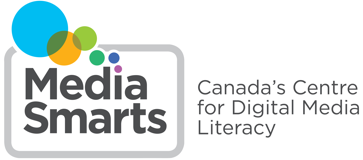These posters are freely available to print and hang in your schools, in libraries, or community centres.
In 2015, MediaSmarts and PREVNet conducted a study of Canadian students – funded by TELUS – to find out how to give youth better advice and support when they witness cyberbullying. That research, Young Canadians' Experiences with Online Bullying, aimed to discover three things: what are the barriers to witness intervention in cyberbullying? What incentives can increase the likelihood of witness intervention? And which interventions are more or less likely to have a positive outcome?
In this lesson, students discuss reasons why they might be reluctant to intervene when they witness cyberbullying and identify ways that they can help without making things worse. They then use the interactive tool Impact! How to Make a Difference When You Witness Bullying Online to help them decide how to navigate scenarios relating to being a witness to bullying, and share their experiences to help them understand how important it is to think carefully before you act.
This parent guide provides information about cyberbullying, and includes practical tips on how to help prevent or reduce the impact of cyberbullying, what you should do if your child is targeted or if your child is cyberbullying someone, and how you can help your child stand up to cyberbullying.
On the Loose: A Guide to Online Life for Post-Secondary Students supports young adults who are experiencing both new freedoms and challenges in their post- secondary life.
Ask yourself:
- Am I letting things go because I don't think I can do anything to help? Actually, what you do is super important. What witnesses do about bullying is actually one of the most important factors in how much someone is hurt by it and can go a long way in building positive online spaces.
- Am I letting things go because I'm worried about becoming a target? It's normal to be afraid that someone who's being mean might get mad at you if you do something public to defend the person they’re targeting.
Lots of times kids will say they’re not bullying, they’re ‘just joking’ – in fact, it’s the number one reason for being mean online. Other times, people will play down how serious the situation really is.
Before you react, ask yourself:
- Am I letting things go because I'm worried about making things worse for the person being targeted? Some things we do when we witness cyberbullying – even when we're trying to help – can make things worse, so it’s always a good idea to step back and think about the situation before jumping in.
- Am I letting things go because I don't like the target? It can be hard to feel bad for someone we don't like.
September 22 is Character Day, an international day that fosters a conversation around developing character strengths (resilience, grit, empathy, courage, kindness) – all rooted in evidence-based research. We’d like to share some resources that can help youth think about, and develop, their character.
For more than a decade, MediaSmarts has been a leader in defining digital literacy in Canada. This is reflected in the elementary digital literacy framework we launched in 2015. The Use, Understand & Create framework is based on a holistic approach which recognizes that the different skills that make up digital literacy cannot be fully separated.
